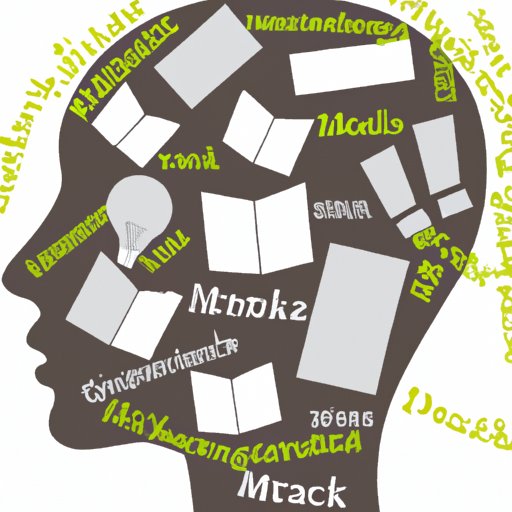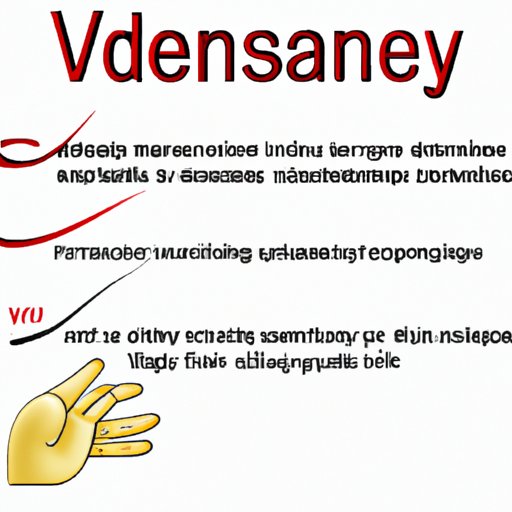Introduction
The ability to describe something accurately and vividly is an important skill for any writer. Whether you are writing fiction or non-fiction, it is essential to be able to bring your subject to life on the page. To do this, you must be able to use words to create a vivid picture of the object, person, or scene that you are describing.
Describing something in writing involves using words to create an image in the reader’s mind. You want to use as many descriptive words as possible so that the reader has a clear understanding of what you are trying to convey. This can include using vivid adjectives and adverbs, incorporating sensory details, creating a mental image, using metaphors and similes, and utilizing all five senses.
Use Vivid Adjectives and Adverbs
Using vivid adjectives and adverbs is one of the easiest ways to bring your subject to life in writing. Adjectives are words that describe nouns or pronouns, while adverbs are words that describe verbs, adjectives, or other adverbs. By using descriptive adjectives and adverbs, you can create a vivid image of the subject in the reader’s mind.
For example, instead of saying “the cat was small”, you could say “the petite feline crept silently across the room”. Here, you have used two adjectives (“petite” and “silently”) and one adverb (“crept”) to give the reader a much clearer image of the cat.
Utilize Sensory Details
In addition to using vivid adjectives and adverbs, you should also try to incorporate sensory details into your description. Sensory details are words that evoke one of the five senses: sight, smell, taste, touch, and sound. By including sensory details, you can create an emotional response in the reader and help them to better visualize what you are describing.
For example, if you were describing a delicious meal, you could say “the succulent pork chops were glazed with a sweet and tangy sauce, and the aroma wafted through the air”. Here, you have used three sensory details (“succulent”, “sweet and tangy”, and “aroma”) to give the reader a sense of what the meal tastes, smells, and looks like.

Create a Mental Image for the Reader
Creating a mental image for the reader is another key component of describing something in writing. By painting a vivid picture of the subject, you can help the reader to visualize what you are describing. To do this, you should focus on the details and use as many descriptive words as possible.
For example, if you were describing a sunset, you could say “the sky was ablaze with hues of orange, pink, and purple, and the sun was slowly sinking below the horizon”. Here, you have used several descriptive words (“ablaze”, “hues”, “orange”, “pink”, “purple”, “slowly sinking”) to create a vivid mental image of the sunset for the reader.
Include Metaphors and Similes
Metaphors and similes are two powerful tools for describing something in writing. A metaphor is a figure of speech that compares two unlike things without using the words “like” or “as”, while a simile is a figure of speech that compares two unlike things using the words “like” or “as”. Both metaphors and similes can be used to create vivid images in the reader’s mind.
For example, if you were describing a storm, you could say “the thunder was like a lion roaring in the night sky”. Here, you have used a simile to compare the thunder to a lion roaring, which gives the reader a much clearer image of the storm.
Incorporate Figurative Language
Figurative language is another great tool for describing something in writing. Figurative language is language that is not meant to be taken literally, but instead conveys a deeper meaning. Examples of figurative language include idioms, hyperbole, and personification. By using figurative language, you can add depth and emotion to your descriptions.
For example, if you were describing a person, you could say “she was a ray of sunshine in a gloomy world”. Here, you have used a metaphor to compare the person to a ray of sunshine, which conveys a deeper meaning than simply saying “she was cheerful”.
Utilize All Five Senses
Another way to make your descriptions more vivid is to utilize all five senses. By using words that evoke the five senses, you can help the reader to experience the subject as if they were actually there. For example, if you were describing a beach, you could say “the ocean waves crashed against the shore, the sand felt warm beneath my feet, and the salty sea air filled my nostrils”. Here, you have used words to evoke the senses of sight, touch, and smell, which helps the reader to experience the beach as if they were there.

Paint a Picture with Words
The last tip for describing something in writing is to paint a picture with words. By using descriptive words and vivid imagery, you can create a vivid image of the subject in the reader’s mind. To do this, you should focus on the details and use as many descriptive words as possible.
For example, if you were describing a garden, you could say “the vibrant flowers bloomed in a rainbow of colors, the lush grass swayed in the breeze, and the sweet scent of roses filled the air”. Here, you have used words to evoke the senses of sight, smell, and touch, which helps the reader to experience the garden as if they were there.
Conclusion
Describing something in writing is an important skill for any writer. It involves using vivid adjectives and adverbs, incorporating sensory details, creating a mental image, using metaphors and similes, utilizing figurative language, and utilizing all five senses. By following these tips, you can create vivid descriptions that will bring your subject to life on the page.
(Note: Is this article not meeting your expectations? Do you have knowledge or insights to share? Unlock new opportunities and expand your reach by joining our authors team. Click Registration to join us and share your expertise with our readers.)
